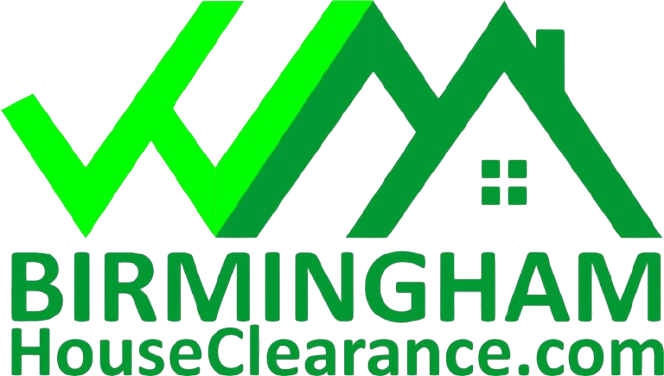Introduction to House Clearance Pricing in the UK 2025
What is House Clearance?

House Clearance Pricing in the UK 2025: House clearance is the comprehensive process of removing all items from a property, often essential when moving, downsizing, or dealing with the estate of a deceased loved one. This service encompasses not only the removal of furniture and personal belongings but also the careful consideration of what can be resold, donated, or disposed of responsibly. In the UK, house clearance services are increasingly popular as families navigate the complexities of property management and personal transitions. The process varies in scale and complexity, depending on the size of the property and the volume of items involved. It requires a level of expertise and logistical planning that only professional services can offer.
Engaging a house clearance service can transform what is often a daunting task into a streamlined, efficient operation. Professionals in this field understand the nuances of item categorisation, disposal regulations, and the emotional components tied to personal belongings, providing a compassionate and effective service. Whether it’s an entire household or just a few rooms, house clearance is tailored to meet individual needs, emphasising the importance of responsible and respectful handling of all possessions, particularly in sensitive situations such as bereavement.
Factors Influencing Pricing
Several key factors influence the cost of house clearance services, each contributing to the overall pricing structure. The primary considerations include the size of the property, the volume of items needing removal, and the distance to disposal sites. Larger properties naturally incur higher costs due to increased person-hours and transport requirements. Additionally, the types of items being cleared—whether they include bulky furniture, hazardous materials, or valuable antiques—can significantly affect pricing due to varying disposal fees and handling considerations.
Understanding these factors is crucial for accurate budgeting. For instance, specific items may require special attention, such as electronics or materials considered hazardous, which can lead to additional charges. Accessibility is another pivotal factor; properties located in congested areas or those requiring complex access arrangements may attract higher fees. By grasping these elements, homeowners can better prepare financially and ensure they receive a fair quote from house clearance providers.
Benefits of Professional Services
Opting for a professional house clearance service presents numerous advantages that extend beyond mere convenience. One of the foremost benefits is efficiency; professionals are adept at managing the logistics of a clearance, allowing homeowners to focus on other pressing matters during transitional periods. The expertise of these services means items are sorted and disposed of appropriately, adhering to local regulations and minimising environmental impact.
Moreover, professional services often have established networks for recycling and donating items, ensuring that usable goods do not end up in landfills. This aspect not only supports sustainability but can also provide financial returns for homeowners through the resale of valuable items. The reduction of stress associated with clearing a property is another significant advantage; professional teams handle the heavy lifting, sorting, and disposal, alleviating the emotional burden that can accompany such tasks. In essence, engaging professionals transforms a potentially overwhelming process into a manageable, even positive, experience.
Average Costs of House Clearance in 2025

As of 2025, the average costs for house clearance services in the UK can vary significantly based on several factors, including location and the specifics of the service provided. On average, homeowners can expect to pay anywhere from £300 to £1,000 for a complete house clearance. Properties in London and the South East tend to attract higher rates due to increased demand and higher operational costs, with prices often surpassing the national average.
Regional differences play a crucial role in shaping these costs; for example, a house clearance in a rural area might be considerably less expensive than in a city centre due to lower overheads and competition. Additionally, the specific requirements of the clearance can influence pricing; for instance, clearances involving specialised disposal of hazardous materials can incur additional costs. Homeowners need to gather multiple quotes and understand what services are included to ensure they are receiving a competitive rate that reflects the quality and scope of the work.
How to Choose a House Clearance Company
Selecting the right house clearance company is critical to ensuring a smooth and satisfactory experience. Key factors to consider include the company’s reputation, licensing, and adherence to environmental practices. Start by researching local companies and reading customer reviews to gauge their reliability and service quality. Recommendations from friends or family can also be invaluable in this process.
Licensing is another crucial aspect; ensure that the company is registered with the relevant environmental authorities, as this indicates compliance with waste disposal regulations. Additionally, inquire about their environmental practices, such as recycling policies or partnerships with charitable organisations for donating items. A company that prioritises sustainability not only contributes positively to the community but also aligns with many homeowners’ values today. Finally, discussing their process and obtaining a detailed estimate will help clarify what to expect, allowing for an informed decision based on transparency and trustworthiness.
How to Estimate House Clearance Costs in the UK 2025?
What Affects the Base Price?

The base price for house clearance can fluctuate significantly based on various factors, which include the size of the property, the volume of items, and the accessibility of the location. Larger properties typically require more time and resources, increasing the initial quote. Similarly, the number of items, especially if they are bulky or heavy, can substantially affect costs, as more labour will be necessary for removal.
Accessibility plays a pivotal role in pricing. Properties situated in hard-to-reach areas or those that involve complex access points, such as narrow staircases or limited parking, may incur additional fees. The condition of the items can also influence pricing; for example, items requiring special handling or disposal, such as large appliances or hazardous materials, often lead to an uptick in costs. Understanding these aspects can empower homeowners to obtain accurate quotes and budget effectively for their clearance needs.
Additional Costs to Consider
When estimating house clearance costs, homeowners should be aware of additional expenses that may arise during the process. One notable consideration is the disposal of hazardous materials, which can incur specific fees that vary depending on local regulations and the nature of the materials. Furthermore, transportation costs may apply, particularly if the clearance company needs to travel significant distances to dispose of items properly.
Labour costs should also be factored into the overall budget. While some companies might offer competitive base prices, additional charges for labour beyond standard hours or for specialised handling can quickly add up. Homeowners should also consider potential costs associated with cleaning or repairs required after the clearance is complete. Being mindful of these factors can help prevent unexpected financial burdens, ensuring that budgeting for house clearance remains manageable.
Tips for Getting Accurate Quotes
To obtain accurate quotes for house clearance services, homeowners should provide comprehensive information about the property and the items involved. This information should include details such as the size of the property, the number and type of items needing clearance, and any special requirements such as the disposal of hazardous materials. By being thorough in this initial communication, homeowners can ensure that quotes reflect the true scope of work.
It’s also advisable to compare multiple quotes from different companies to ascertain a fair market rate. When doing so, homeowners should not only focus on the price but also consider the level of service offered, including the company’s reputation and customer support. Engaging in discussions with potential service providers can reveal valuable insights into their processes and commitment to customer satisfaction. Ultimately, investing time in gathering and comparing quotes can lead to a more cost-effective and satisfactory clearance experience.
Expert Insights on House Clearance Pricing in the UK 2025
Include real-world examples of pricing variations.
House clearance pricing can vary significantly depending on various real-world scenarios. For instance, a two-bedroom flat clearance in Manchester might cost around £400, whilst a five-bedroom house clearance in London could exceed £1,200 due to the larger volume of items and higher disposal costs. Factors that can affect these variations include:
- Location: Urban areas often have higher costs than rural locales.
- Property size: Larger homes naturally require more time and resources.
- Item condition: Clearances involving antique or valuable items might require specialised knowledge.
- Accessibility: Properties that are difficult to access may incur additional charges.
Another example could be a garage clearance in a suburban area, which might realistically cost just £150. In contrast, a comprehensive office clearance in a busy city centre can escalate to over £1,000 due to logistical complexities. These case studies illustrate the importance of understanding the individual characteristics of each clearance scenario when anticipating costs.
Provide actionable steps for cost-effective clearances.
Homeowners can adopt several actionable steps to achieve cost-effective house clearances. One of the most effective strategies is to sort items in advance. By categorising belongings into keep, sell, donate, or dispose of, individuals can streamline the process and reduce the volume of items that require professional removal. This not only cuts costs but also makes for a more organised clearance.
Another money-saving tip is to consider timing; opting for clearance services during off-peak months or days of the week can sometimes yield lower rates as businesses may offer discounts to attract clients. Homeowners should also be proactive in comparing quotes and discussing potential discounts with service providers. Flexibility in scheduling may enable homeowners to negotiate better pricing. By employing these strategies, individuals can significantly reduce their clearance expenses while still receiving high-quality service.
Offer expert analysis on future trends.
As we look towards the future of house clearance pricing in 2025, several trends are likely to emerge that may influence costs. One pivotal factor is the increasing emphasis on environmental regulations, which will shape how companies manage waste disposal and recycling. As consumers become more environmentally conscious, we can expect a rise in demand for services that prioritise sustainable practices, potentially impacting pricing structures.
Furthermore, the market demand for house clearance services is expected to grow as more individuals and families face transitions, whether due to moving, downsizing, or dealing with estate matters. This growing demand may lead to increased competition among service providers, which could, in turn, drive down prices for consumers. The integration of technology into the house clearance process, such as apps for item inventory and tracking disposal, may also create efficiencies that lower operational costs.
Discuss regional pricing differences.
House clearance pricing in the UK is not uniform and can vary considerably across different regions. For example, in London, prices are significantly higher compared to smaller cities or rural areas due to the high cost of living and increased demand for services. Similarly, regions such as the South East often see elevated rates, while northern areas like Yorkshire and the North East generally offer more competitive pricing.
Local competition also plays a role in shaping prices; regions with numerous service providers may present more options, driving costs down as businesses strive to attract customers. Additionally, the average household income in a given area can influence what companies charge. Homeowners should be aware of these regional differences and conduct thorough research to ensure they are receiving fair pricing reflective of their specific location.
What Are the Legal Considerations for House Clearance in the UK in 2025?
What Laws Govern House Clearance?
House clearance in the UK is subject to several laws and regulations aimed at ensuring responsible waste management and protecting individuals’ rights. Key among these are the Environmental Protection Act 1990, which governs waste disposal practices, and the Waste (England and Wales) Regulations 2011, which stipulate how waste must be managed and documented. If personal belongings are involved, the Data Protection Act 2018 may also come into play, especially when sensitive information is present.
Compliance with these laws is imperative for both homeowners and service providers. Failure to adhere to regulations can result in significant penalties, including fines for improper disposal or handling of waste. Understanding these laws can help homeowners choose reputable providers who operate within the legal framework and maintain high standards of service.
How to Ensure Compliance?
To ensure compliance with house clearance laws in the UK, homeowners should prioritise hiring licensed professionals who are well-versed in local regulations. Checking that the company holds the necessary waste carrier license is essential, as this indicates adherence to legal standards for waste disposal. Moreover, keeping records of disposals and receipts for services rendered can provide valuable documentation in case of regulatory scrutiny.
In addition to engaging licensed companies, homeowners should familiarise themselves with local council guidelines regarding waste management. Many councils have specific protocols for the disposal of certain items, particularly hazardous materials, which must be followed to avoid legal repercussions. By prioritising compliance and working with reputable providers, homeowners can navigate the legal landscape with confidence.
Consequences of Non-Compliance
Failure to comply with house clearance laws can lead to serious ramifications for both individuals and service providers. Legal action is one possible outcome, which can result in fines and potential criminal charges for improper waste disposal. Moreover, non-compliance can severely damage one’s reputation, particularly if personal information is mishandled or sensitive items are not disposed of correctly.
The risks associated with non-compliance underscore the importance of engaging licensed professionals who understand and adhere to the laws governing house clearance. Homeowners should be aware that they not only bear the responsibility for ensuring their items are cleared legally but may also be held accountable for the actions of the companies they hire. Thus, conducting due diligence when selecting a service provider is crucial in avoiding these pitfalls.
How Does House Clearance Impact the Environment in the UK in 2025?
What Are the Environmental Concerns?
House clearance can have significant environmental impacts, particularly concerning waste generation and disposal. The sheer volume of items disposed of during clearances can contribute to landfill overflow, leading to detrimental effects on ecosystems. Additionally, improper disposal of hazardous materials, such as electronics or chemicals, can cause soil and water contamination, posing risks to public health and the environment.
As awareness of these environmental concerns grows, more homeowners are seeking responsible clearance services that prioritise sustainability. Understanding the potential environmental impacts of house clearance can motivate individuals to adopt greener practices in their own clearances and advocate for responsible service providers that align with their values.
Sustainable Practices in House Clearance
Sustainable practices in house clearance are essential for minimising environmental impact. One effective approach is to prioritise recycling and donation; many items that are no longer needed may still hold value and can be repurposed by others. Engaging with services that have established partnerships with charities or recycling facilities ensures that usable items are diverted from landfills.
Moreover, choosing clearance services that utilise eco-friendly disposal methods can significantly reduce the environmental footprint of a clearance. This includes using biodegradable packaging materials whenever possible and advocating for practices that limit waste generation. By embracing sustainability, both homeowners and service providers can contribute positively to environmental conservation efforts while still achieving their clearance goals.
Future Trends in Eco-Friendly Clearances
Looking towards the future, eco-friendly clearances are expected to gain even more prominence in the industry. An increased emphasis on zero-waste clearances will likely emerge, with service providers striving to ensure minimal waste is generated during these processes. This may involve innovative approaches to recycling, such as upcycling items into new products or employing advanced sorting technologies to maximise recycling rates.
The use of biodegradable packaging materials is also anticipated to expand, reflecting a broader cultural shift towards sustainability. As regulations around waste disposal become more stringent, companies that prioritise eco-friendly practices will likely have a competitive advantage. Homeowners are becoming increasingly aware of these issues, and the demand for environmentally responsible clearance options will shape the market in the coming years.
Trusted Strategies for House Clearance Pricing in the UK 2025
Strategies for Negotiating Prices
Negotiating house clearance prices can be highly effective if approached strategically. Understanding the current market rates is essential; by researching common pricing in your area, you can make informed arguments when discussing costs with service providers. Flexibility in scheduling could also provide leverage; companies often value the opportunity to fill gaps in their calendar, which could lead to discounts.
Another effective strategy is to be upfront about your budget constraints. Service providers may be willing to offer tailored solutions or alternative packages that fit your financial criteria. Here are some key negotiation tips:
- Research local market rates to establish a baseline for negotiation.
- Be flexible with your schedule to take advantage of off-peak pricing.
- Communicate your budget openly to explore customised options.
- Inquire about any discounts for referrals or repeat business.
By employing these strategies, homeowners can effectively negotiate competitive pricing for their house clearance needs.
How to Choose the Right Service Provider?
Choosing the right service provider for house clearance is paramount to ensuring a successful and hassle-free experience. Start by conducting thorough research on local companies, paying close attention to customer reviews and testimonials. Reputable companies will have a strong online presence and positive feedback from previous clients, reflecting their reliability and service quality.
Additionally, comparing quotes from multiple providers allows homeowners to assess value for money. During this process, inquire about the services included in each quote to ensure clarity on what to expect. Verify that the chosen provider is licensed and compliant with local regulations to safeguard against legal issues arising from improper disposal practices. By taking the time to evaluate these factors, homeowners can confidently select a service provider that meets their needs and adheres to professional standards.
Maximising Value from Cleared Items
Maximising value from cleared items is an essential consideration for homeowners undergoing house clearance. One approach involves identifying valuable pieces that can be sold, whether through online marketplaces, auctions, or local consignment shops. Items such as antiques, artwork, and high-end furniture often hold significant resale value.
Donating items to charitable organisations can yield benefits; it not only provides a sense of goodwill but may also allow homeowners to claim tax deductions on their donations. Recycling is another avenue to explore, as many items can be repurposed or processed into new materials, contributing to sustainability efforts. Each of these approaches provides different benefits, and homeowners should carefully evaluate which option aligns best with their goals and values.
Understanding Market Rates for House Clearance
Understanding current market rates for house clearance services is crucial for effective budgeting and negotiation. Rates can vary widely based on location, service complexity, and regional demand. Conducting market research, including obtaining quotes from multiple providers, will give homeowners a clearer picture of what to expect in terms of pricing.
Paying attention to local competition can reveal pricing trends; areas with numerous options may offer lower rates, whereas locations with limited providers might experience inflated prices. In addition to basic clearance costs, homeowners should also factor in potential additional fees associated with specific items or disposal requirements. By having a comprehensive understanding of market rates, individuals will be better equipped to negotiate and budget effectively for their house clearance.
What Are the Common Challenges in House Clearance in the UK in 2025?
Dealing with Sentimental Items
Dealing with sentimental items during a house clearance can be one of the most emotionally challenging aspects of the process. These items often hold deep personal significance, making it difficult to decide their fate. Homeowners may find themselves torn between the desire to preserve memories and the practical need to declutter. It’s essential to approach this task with sensitivity and care.
Setting aside time to sort through sentimental items can help mitigate emotional stress. Consider options such as keeping only the most meaningful pieces, photographing items before disposal, or even repurposing them into new forms. This approach allows for the retention of memories without the burden of clutter. Engaging family members in discussions about these items can also provide support, enabling collective decision-making and shared reminiscence in the process.
Managing Large or Bulky Items
Managing large or bulky items during a house clearance can pose logistical challenges that require careful planning. Items such as sofas, wardrobes, or appliances may necessitate additional workforce or specialised equipment for safe removal. Homeowners should assess their space and consider hiring professionals with the experience and tools to handle these items efficiently.
Moreover, this may involve evaluating accessibility; narrow hallways, staircases, or tight doorways can complicate the removal process, potentially leading to damage to the property or the items themselves. Communicating these considerations with the chosen clearance company is crucial, as they can provide tailored solutions to ensure an effective clearance. By proactively addressing these challenges, homeowners can facilitate a smoother and more efficient clearance process.
What to Do with Hazardous Materials?
Addressing hazardous materials during a house clearance requires careful planning and specialised handling. Items such as paints, chemicals, batteries, and electronic waste must be identified early in the clearance process, as they pose risks to both health and the environment. Homeowners should not attempt to dispose of these materials independently; instead, engaging a professional service is essential.
Many clearance companies are equipped to handle hazardous materials and can ensure that they are disposed of according to local regulations. Homeowners should inquire about the company’s procedures for managing these items during the initial quote phase to ensure compliance with safety standards. It’s critical to recognise and address hazardous materials effectively, as improper disposal can lead to serious legal and environmental consequences.
Future Outlook for House Clearance Pricing in the UK 2025
Technological Advances in House Clearance
Technological advancements are poised to revolutionise the house clearance industry by 2025. Innovations such as apps for inventory management and virtual assessments can streamline the clearance process, making it more efficient and user-friendly. Homeowners might find it increasingly convenient to catalogue their belongings digitally, making the sorting process easier and more organised.
Moreover, technology can facilitate better customer service; for instance, automated booking systems and real-time updates on clearance status can enhance the overall experience. As logistics software improves, companies will likely be able to optimise routes for waste disposal, reducing transportation costs and emissions. These technological advancements will not only increase efficiency but also contribute to a more sustainable approach to house clearance.
Economic Factors Influencing Pricing
Several economic factors are likely to influence house clearance pricing in the UK by 2025. Inflation tends to play a significant role in driving up costs across various sectors, including labour and materials. As inflation rates rise, consumers may see an increase in the pricing of house clearance services, reflecting higher operational costs for providers.
Additionally, labour shortages in specific regions may push service prices higher as companies compete for available workers. The overall economic climate, including shifts in consumer spending and housing market trends, will also affect demand for clearance services. By monitoring these economic indicators, homeowners can better anticipate potential changes in pricing and make informed decisions about their clearance needs.
Consumer Trends and Preferences
Consumer trends are gradually shifting towards more eco-friendly and cost-effective house clearance services, reflecting broader societal values around sustainability. As more individuals become conscious of their environmental impact, the demand for services that prioritise recycling, donation, and responsible disposal is likely to grow. Companies that align with these values by offering green clearance options will have a competitive advantage in the market.
Furthermore, consumers are increasingly seeking transparency and ethical practices from service providers. This trend may drive companies to adopt clearer pricing structures, offer detailed quotes, and demonstrate their commitment to sustainability. As these consumer preferences continue to evolve, house clearance providers will need to adapt their offerings to remain relevant and appealing in a competitive landscape.
FAQs
What are the average house clearance prices in the UK for 2025?
Average prices for house clearance in the UK in 2025 range from £300 to £1,000, depending on property size and location.
How can I prepare for a house clearance?
Preparing for a house clearance involves sorting items into categories—keep, sell, donate, or dispose—and providing accurate details to your chosen service provider.
What factors affect house clearance pricing?
Factors affecting pricing include property size, item volume, accessibility, and the presence of hazardous materials.
Are there any legal regulations for house clearance services in the UK?
Yes, regulations include the Environmental Protection Act and local waste disposal laws, which must be adhered to by both homeowners and service providers.
How can I find a reputable house clearance company?
Research local companies by reading reviews, seeking recommendations, and verifying their licensing and compliance with environmental regulations.
What should I do with sentimental items during a clearance?
Take time to carefully sort sentimental items, considering options to keep, photograph, or repurpose them to preserve memories without clutter.
Are there additional costs I should consider during a house clearance?
Yes, additional costs may arise for hazardous material disposal, transportation, and potential labour charges beyond the initial quote.
Can I negotiate prices with house clearance companies?
Absolutely, negotiating prices is possible. Research market rates and be flexible with scheduling to find a better deal.
What are sustainable practices in house clearance?
Sustainable practices include recycling, donating usable items, and choosing services that prioritise eco-friendly disposal methods.
What challenges might I face during a house clearance?
Common challenges include dealing with sentimental items, managing large or bulky objects, and handling hazardous materials appropriately.






